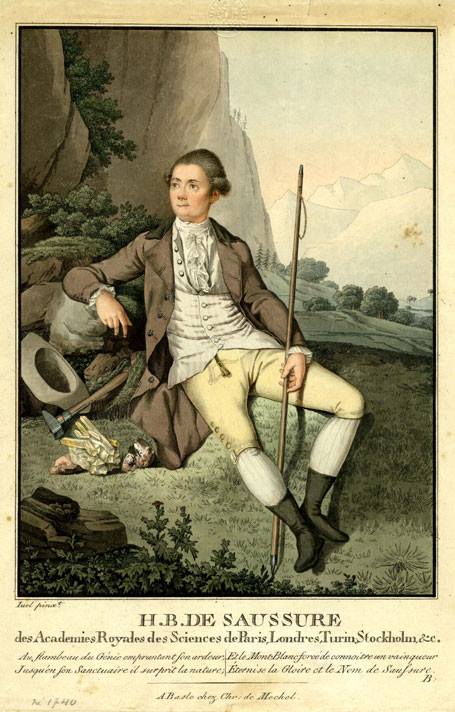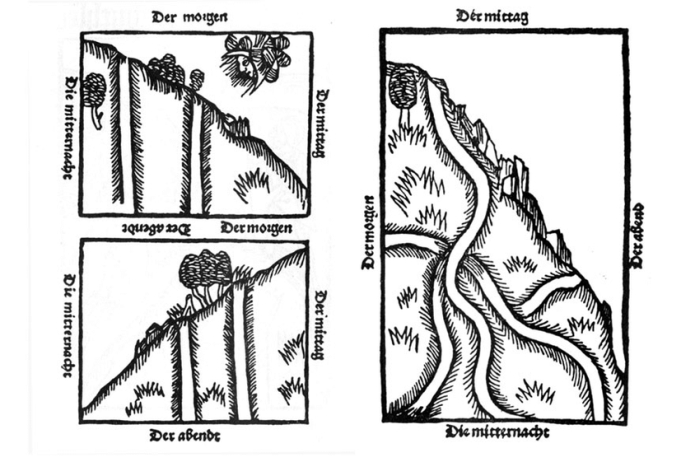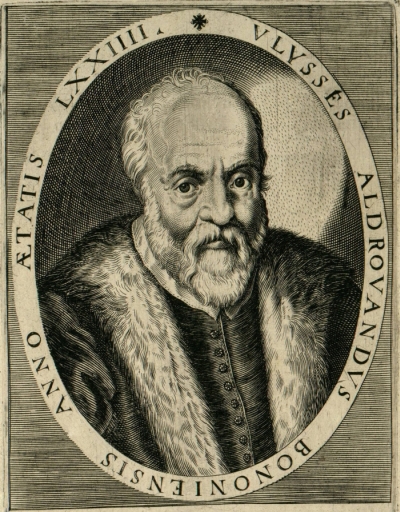Curiously enough the first time the word geology appears in written form is in the last will of an Italian naturalist in 1603.

In the 17th century, noblemen began collecting natural objects in their cabinets and private museums. The displayed natural oddities and specimens were mostly acquired by chance from lucky discoverers. It was only later that naturalists started to go in the field, even if such an activity was considered more a necessity to gather more specimens than a means to explore the natural world.
Swiss professor of philosophy Horace-Bénédict de Saussure (1740-1799) was one of the first to propose that naturalists should not only collect specimens, but also take observations and exact measurements in the field. Naturalists or natural philosophers were names given to well-educated people interested and dedicated to the slowly emerging fields of „natural history“ and „natural philosophy.“ Natural philosophy was interested in all observable phenomena in nature, from the physiological reaction of the body on the summit of Mount Blanc (climbed by de Saussure in 1787) to the rocks composing the mountain.

Natural philosophy itself later became divided into three sub-disciplines: zoology (the collection of animals), botany (the collection of plants) and mineralogy (the collection of minerals and rocks, including fossils). The passion of few noblemen to collect rocks, minerals and fossils only slowly evolved in a science studying rocks, minerals and fossils.
In Germany, leading in mining technologies at the time, „geognosie“ (translated maybe as „Knowledge about the Earth“) evolved from geography. Mapping the distribution of rocks on the surface, geognosts projected the rock formations also into the underground. This science was referred to as „mineralogical geography“ or „géographie souterraine.“ Maybe the Italian name „anatomia della terra“ – Anatomy of the Earth – best describes the goals of this new science.

In 1778, French naturalist Georges-Louis Leclerc de Buffon argued in his Nature’s Epochs the need to create a geotheory to understand the evolution and structure of Earth. In that same year, the term geology was introduced (hesitantly) in the literature by Swiss naturalist Jean-Andre de Luc in his Letters on Mountains:
„I mean here by cosmology only the knowledge of the earth, and not that of the universe. In this sense, „geology“ would have been the correct word, but I dare not adopt it, because it is not in common use.“
Despite de Luc’s concerns, geology became synonymous with the proposed theory of Earth, as a part of cosmology dedicated to the description and explanation of Earth and its relationship with animals, plants and humans.
„In now addressing my brother -geologists – and under this term I would comprehend all who take an interest in the progress of a science whose problems are inseparably interwoven with the whole study of nature – I have been influenced by the conviction that it is good for us, as workers in the same field, occasionally to pause and question ourselves as to the ultimate bearing of our investigations.“
David Page (1863): The Philosophy of Geology.

However, the word geology itself has much older roots. In his last will written in 1603, the Italian Ulisse Aldrovandi (1522-1605) introduced the term „giologia“ to refer to the study of fossilia – the unearthed things. Aldrovandi was a philosopher and physician, but also collector of animal and plant species, fossils, rocks, and minerals. Supposedly he owned the most marvelous collection of his time. A visitor remarks that his collection comprised over 18.000 of „all objects of the natural world, found on and in the Earth, in the air and in the water.“ Aldrovandi didn’t only collect, but also carefully studied the fossila. Giologia, the later science of geology, so Aldrovandi’s hope, would study the origin of rocks, minerals, petrified organisms (Aldrovandi recognized some fossils as once-living things) and the Earth itself.
References:
- VAI, G.B. (2003): Aldrovandi’s Will: introducing the term ‚Geology‘ in 1603. In „Four Centuries of the Word Geology – Ulisse Aldrovandi 1603 in Bologna,“ VAI, G.B. & CAVAZZA, W. (eds.) Minerva Edizioni: 65-110